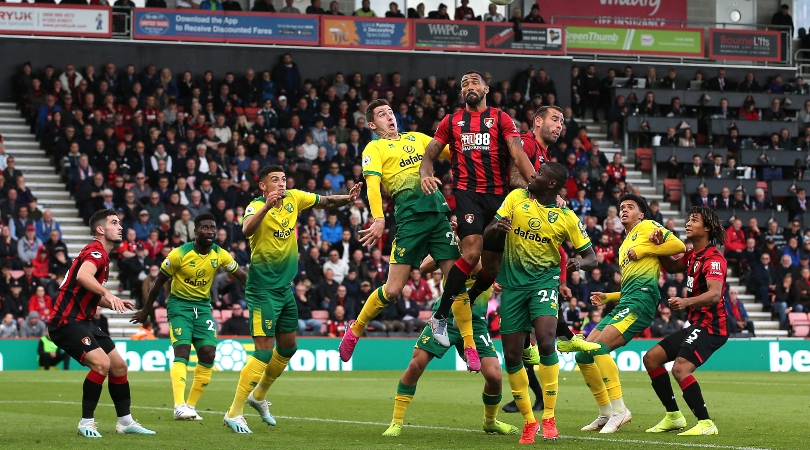John Lundstram is the one player who encapsulates the graft and the beauty of ambitious Sheffield United
A double at the weekend lifted Sheffield United into the top six – cementing the midfielder's place as the heartbeat of Chris Wilder's side

John Lundstram’s season started as it would continue. Sheffield United’s first game back in the Premier League was at Dean Court against Bournemouth and, with less than 30 seconds played, Lundstram wedged a perfect pass over the home defence and into the path of David McGoldrick.
McGoldrick would be denied by Aaron Ramsdale, but in hindsight it was the perfect emblem of what Lundstram and the rest of Chris Wilder’s team would be.
It would also encapsulate a problem Lundstram and United have been labouring under ever since. The perception was of an aimless long ball which had been misread by the centre-halves. Find my match report from that game and I even described it as such at the time.
The reality was different, though. It was a delicate and precise passage of play, exhibiting the kind of mechanics which, until quite recently, this team was presumed not to have.
Sheffield United. From a northern city of heavy industry. Where the weather is cold and the clouds are dark. The regional cliches write themselves and Wilder and his players have spent the first three months of the season trying to forge an independent identity.
But they’re doing it and Lundstram has been one of the architects.
Conveniently so, because his path to the Premier League has involved many of the same back roads. Released by Everton having grown up in the Finch Farm academy, he would join League Two’s Oxford United in 2015, spending two successful seasons at the Kassam Stadium – including one ending in promotion – before moving to Bramall Lane for a fee that would eventually rise to £700,000.
Get FourFourTwo Newsletter
The best features, fun and footballing quizzes, straight to your inbox every week.
Like his manager Wilder, whose coaching career famously began in the non-leagues, Lundstram challenges a modern trend. He is a player who has had to axe his way up the cliff, who hasn’t defaulted into the Premier League by right, and who – actually – seems equipped with a broader range of abilities as a result of that experience.
Part of the reason for his visibility now is his goalscoring. Three from 11 games may not be a strikerate to keep Sergio Aguero awake at night, but those moments – in addition to the pertinent contributions which haven’t led to a change in score – have perfectly describe both Lundstram’s specific virtues and, in the abstract, what Sheffield United are as a side.
There was, for instance, a very interesting moment right at the beginning of the phase which led to United’s second goal against Burnley at the weekend. Enda Stevens received the ball just ahead of the halfway line and, instinctively, Lundstram raised his hand to attract Stevens’ attention, before setting off for the penalty box.
Seconds later, after a little scuff from Lys Mousset, he was scoring his second goal of the game, in an almost identical position from where he scored his first. It also resulted from the same run that brought Lundstram his first of the season, against Crystal Palace, and – for those with longer memories – his most recent league goal before that, against Queens Park Rangers in February 2018.
Viewed through the prism of those incidents alone, it’s easy to describe Lundstram in patronising terms. Those moves show his effort and his energy and his willingness to run relatively long distances in pursuit of a potential chance. At the end of that Burnley game, with United three-up in the 90th minute, he also sprinted 70 yards in support of Billy Sharp and, after collecting a square pass, very nearly completed his hat-trick.
So that’s a very compelling portrait. It’s Lundstram as the grafter and the grinder, the player who never gives up on anything. What that portrayal ignores, however, are the disciplines involved in being in the right place at the right time, and a player’s need to have an understanding for how an attacking move develops if he is to profit from it. After all, what that little raise of the hand represented was lightning fast recognition; the ball was at Stevens' feet, and Lundstram processed and acted upon the opportunity almost reflexively.
Which isn’t to say that Lundstram doesn’t possess those more blue-collared attributes, but that they are pre-requisites - the framework around something more intricate.
The nature of that something has been subtly in evidence throughout the season. In the cute little reverse pass that nearly created a goal for George Baldock at the London Stadium, for instance, or the round-the-corner ball which very much did for Mousset at Goodison Park. Or perhaps even the raking diagonal which sprung Mousset again, this time against Liverpool, and began a move which really should have led to United taking the lead.
Or, obviously, that very first touch of the season, back at the Vitality Stadium in August.
Lundstram and Sheffield United are almost inextricable. Their aesthetics are his. The misconceptions which surround him also swirl around them. In each case, these fundamentals – positioning, discipline, a willingness to run when others won’t – disguise something of great finesse.
They aren't a good story, they're a good side. He isn't a good story, he's a very good player.
While you're here, why not take advantage of our brilliant subscribers' offer? Get the game's greatest stories and best journalism direct to your door for only £9.50 every quarter. Cheers!
NOW READ...
COMMENT Can Antoine Griezmann ever thrive in Lionel Messi's Barcelona?
QUIZ How many of the 141 clubs to appear in the Champions League group stage can you name?
GUIDE Premier League live stream best VPN: how to watch every game from anywhere in the world
Seb Stafford-Bloor is a football writer at Tifo Football and member of the Football Writers' Association. He was formerly a regularly columnist for the FourFourTwo website, covering all aspects of the game, including tactical analysis, reaction pieces, longer-term trends and critiquing the increasingly shady business of football's financial side and authorities' decision-making.

